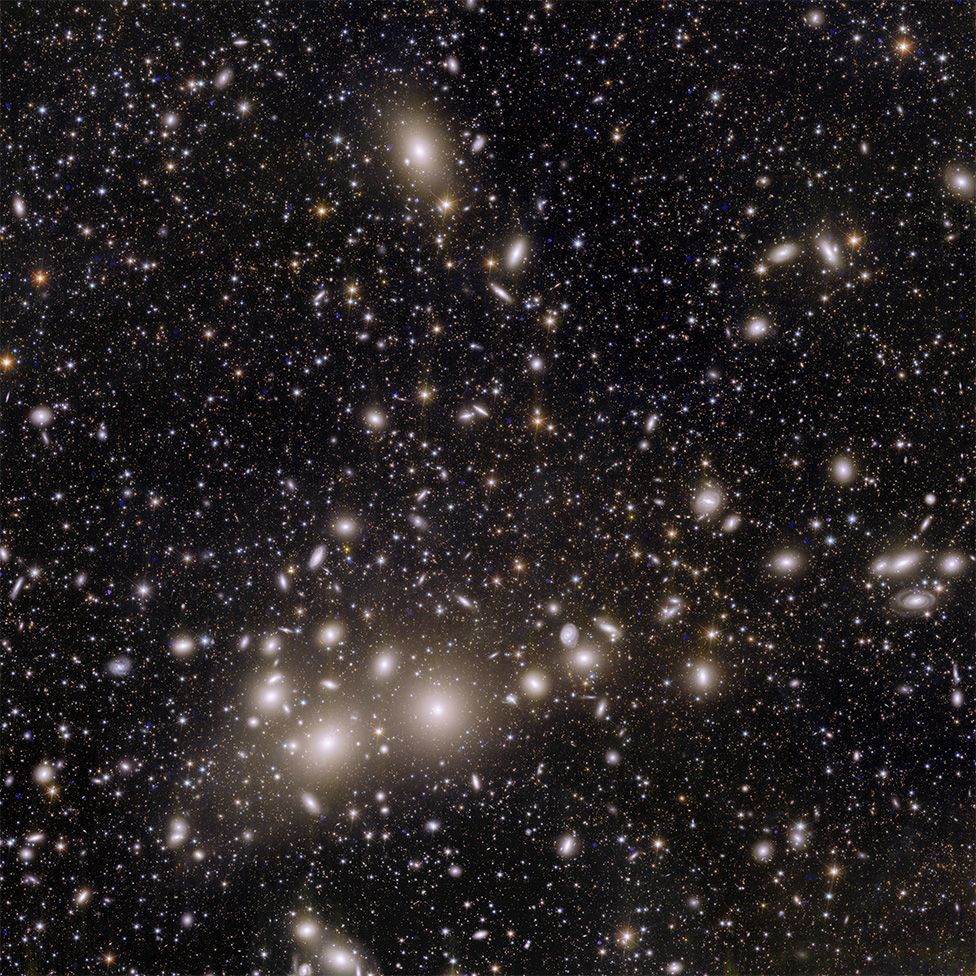Previous 1 ... 230 231 232 233 234 235 236 ... 241 Next
Lucy finds not one but two diamonds in the sky
This flyby was not so much about the science but rather proving the capability of the spacecraft to point its instruments and take data while whizzing by an asteroid. In this case, Lucy zoomed by Dinkinesh at a speed of 10,000 mph (4,470 meters per second). And, as can be seen from the first images returned by Lucy, the spacecraft succeeded.

Euclid telescope: First images revealed from 'dark Universe' mission
NASA Telescopes Discover Record-Breaking Black Hole
Bogdan and his team found the black hole in a galaxy named UHZ1 in the direction of the galaxy cluster Abell 2744, located 3.5 billion light-years from Earth. Webb data, however, has revealed the galaxy is much more distant than the cluster, at 13.2 billion light-years from Earth, when the universe was only 3% of its current age.
Then over two weeks of observations with Chandra showed the presence of intense, superheated, X-ray emitting gas in this galaxy – a trademark for a growing supermassive black hole. The light from the galaxy and the X-rays from gas around its supermassive black hole are magnified by about a factor of four by intervening matter in Abell 2744 (due to gravitational lensing), enhancing the infrared signal detected by Webb and allowing Chandra to detect the faint X-ray source.
This is the oldest black hole ever found — and it's huge

Even more astounding to scientists, this black hole is a whopper — 10 times bigger than the black hole in our own Milky Way.
Evidence for heavy-seed origin of early supermassive black holes from a z ≈ 10 X-ray quasar
tl;dr - When they say they are seeing the light from 13.2 billion years ago, we are not seeing the object as it was 13.2 billion years ago. The light has been stretched by the expansion of the universe, and has taken 13.2 billion years to reach us. The light itself may have left the source 200 or 300 million years after the big bang, which is the object we see. It's difficult to determine the exact age the age it is in that photo, but educated guesses can be made.
So, a black hole formed shortly after the matter formed by the big bang cooled enough to form matter, and collapsed into a giant black hole. This was predicted by current theories, but confirmation is good to have. The planet that might exist in our solar system called 'Planet X' may also be a grapefruit sized black hole that also formed around the same time, when matter was much closer together and cooled enough to form dense clumps. But that is just one theory.
Gamma-ray burst charged Earth’s ionosphere from 2 billion light-years away
The ionosphere is one of the Earth’s atmospheric layers, stretching from 60 km to more than 950 km in altitude. Containing electrically charged plasma, its lower half, called the bottom-side, extends until 350 km. Beyond 350 km lies the upper half, called the top-side.
G3 (Strong) Geomagnetic Storms Now Likely on 01 Dec with a Full Halo CME
TL;DR, The aurora tonight and the next couple nights will be epic!
We have some suggestions....
Don’t count on NASA to return humans to the Moon in 2025 or 2026, GAO says
Space is hard, especially when Congress doesn't fund it.
India reveals that it has returned lunar spacecraft to Earth orbit
Like a beating heart the universe explodes, cools, shrinks and explodes again.
Previous 1 ... 230 231 232 233 234 235 236 ... 241 Next